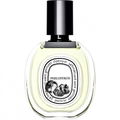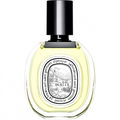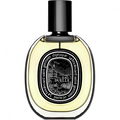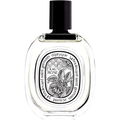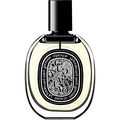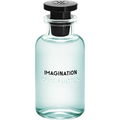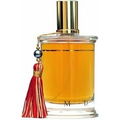05/23/2025

ClaireV
731 Reviews

ClaireV
2
Clove and peach antibiotic syrup
I want this to stand as my warning to anyone else who was sold on the exotic promise of the copy – zukoh powder, incense, benzoin, osmanthus, the art of kōdō, etc. I was emotionally invested in this perfume, sight unseen, for about six months before I was even financially invested in it. I fantasized daily about it – apricots, leather, incense, sandalwood, oh my! I just knew that this scent was going to be my personal osmanthus GOAT. I even adored Diptyque’s clever portmanteau of osmanthe and kimono, which emphasized the connection between osmanthus and Japanese rituals and dress.
Kimonanthe proved to be excruciatingly difficult to get a hold of. I kept trying to buy directly from Diptyque in Paris, but their dropdown menus were continuously bedeviled at the suggestion that Ireland was part of Europe (perhaps the French are generally bemused at the thought that they share geopolitical space with clodhoppers like us). Anyway, when I finally got Collette to ship it to me – right before they closed their doors for good – I thought all my ducks had come home to roost.
Good Lord. Listen, I am familiar with Japanese incense. I understand that clove, benzoin, camphor, and aloeswood (agarwood) are the main recurring ‘flavor’ motifs in these delicate, coreless sticks. I also own a bit of zukoh powder. I do understand, therefore, the general aroma-scape of Kimonanthe. But the unfortunate thing that Diptyque failed to consider is that, when you put camphor, syrupy apricots (osmanthus) and benzoin together, it is almost impossible to not end up with cherry-flavored antibiotic syrup, the type you give to small children who can't swallow pills yet. Each time I pick up my bottle of Kimonanthe, I hope that my nose has gotten more sophisticated in the meantime and that I will now be able to smell the tart osmanthus leather, incense, and sandalwood power as intended. And each time, I run into that thick wall of cherry antibiotic syrup.
Kimonanthe is undeniably a striking osmanthus perfume. It is strong, rich, and with that camphor-cherry syrup opening, unique. I admire it, study it, contemplate it – but do not like it. Not even one little bit. I keep wishing that I did because I spent upwards of €175 to get it. I wish I understood better what the perfumer had been going for, so that I might unlock its appeal. I know enough about the behavior of raw materials to be able to pick out benzoin, camphor, clove. But I cannot understand why someone would put them together in this way to produce an olfactory effect that is so jarring. Yes, the drydown is better, but hardly more special than any other incensey sandalwood thing you might already own, like Samsara (Guerlain).
Kimonanthe proved to be excruciatingly difficult to get a hold of. I kept trying to buy directly from Diptyque in Paris, but their dropdown menus were continuously bedeviled at the suggestion that Ireland was part of Europe (perhaps the French are generally bemused at the thought that they share geopolitical space with clodhoppers like us). Anyway, when I finally got Collette to ship it to me – right before they closed their doors for good – I thought all my ducks had come home to roost.
Good Lord. Listen, I am familiar with Japanese incense. I understand that clove, benzoin, camphor, and aloeswood (agarwood) are the main recurring ‘flavor’ motifs in these delicate, coreless sticks. I also own a bit of zukoh powder. I do understand, therefore, the general aroma-scape of Kimonanthe. But the unfortunate thing that Diptyque failed to consider is that, when you put camphor, syrupy apricots (osmanthus) and benzoin together, it is almost impossible to not end up with cherry-flavored antibiotic syrup, the type you give to small children who can't swallow pills yet. Each time I pick up my bottle of Kimonanthe, I hope that my nose has gotten more sophisticated in the meantime and that I will now be able to smell the tart osmanthus leather, incense, and sandalwood power as intended. And each time, I run into that thick wall of cherry antibiotic syrup.
Kimonanthe is undeniably a striking osmanthus perfume. It is strong, rich, and with that camphor-cherry syrup opening, unique. I admire it, study it, contemplate it – but do not like it. Not even one little bit. I keep wishing that I did because I spent upwards of €175 to get it. I wish I understood better what the perfumer had been going for, so that I might unlock its appeal. I know enough about the behavior of raw materials to be able to pick out benzoin, camphor, clove. But I cannot understand why someone would put them together in this way to produce an olfactory effect that is so jarring. Yes, the drydown is better, but hardly more special than any other incensey sandalwood thing you might already own, like Samsara (Guerlain).





 Osmanthus
Osmanthus Incense material
Incense material Star anise
Star anise Sandalwood
Sandalwood



 Gavarrus
Gavarrus ScentedSalon
ScentedSalon
